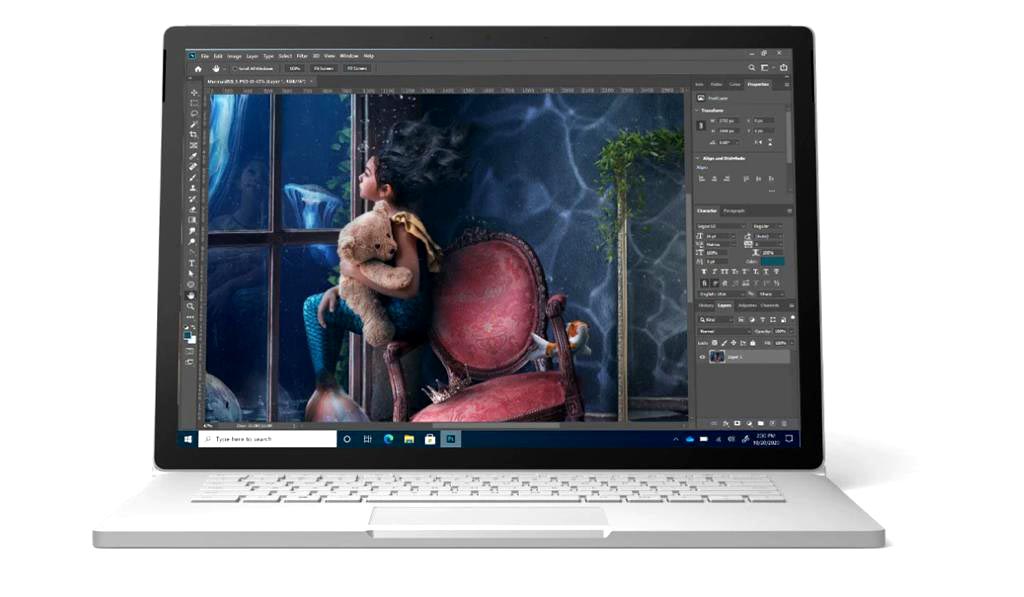
Music Video Editors - Check Out The Best Laptops For Video Editing In 2021
I’m a video editor – What Do I Need In A Laptop?
1. CPU
The most crucial factor involved in editing is the CPU. Many people believe that it is the GPU, but it is the CPU that decides how easily you can complete editing tasks. When exporting 1080p H.264 video, the test discovered that Premiere Pro could use up to ten CPU cores before performance stalled.
When exporting 1080p H.264 video, the test discovered that Premiere Pro could use up to ten CPU cores before performance stalled. For a dynamic editing project, two cores produced twice the performance of one core, five cores produced four times the performance, and ten cores produced six times the output.
2. GPU
Graphic cards are important if you're playing video games, but it's actually less important for editing tasks. A graphics card is a device in your laptop that converts video data into pixels. As you would suspect, having a lightning-fast graphics card is crucial for video editing.
3. RAM
RAM is important as well. The higher the resolution of the footage, the more RAM would be needed. 16 GB can suffice as a starting point. If you're editing 4K or higher video, you can consider 32, 64, or even more RAM.
4. SSD/HDD
When it comes to video editing hard drives, you can still have an SSD if possible. They are usually more expensive, but they are well worth it. You should also be purchasing a 500GB or larger hard disc.
Many editors suggest that you export your footage to a separate hard drive from where it is currently stored for the sake of time. However, in my opinion, the speed gap is not significant enough to warrant the hassle of getting an external hard drive, particularly if you already have an internal SSD.
5. Display
This can be the most important factor to be considered. For video editing, accurate colors are important. One must at least go for 72% NTSC. A 72-percent NTSC gamut measurement is equivalent to 100 percent of sRGB.
Without a doubt, a laptop for video editing would need excellent and cutting-edge specifications. However, choosing the best computer for your process can be time-consuming — and costly.
Don't worry, we've researched 2020 Laptops in a variety of price points, operating systems, and styles.
1. Dell XPS 15 (2020) - The best video editing laptop available for purchase

SPECIFICATIONS -
• CPU: up to 10th Generation Intel Core i9
• Graphics: up to NVIDIA GeForce GTX 1650 Ti
• RAM: 8GB – 32GB DDR4-2933MHz
• Screen: 15.6" FHD+ (1920 x 1200) – 15.6" UHD+ (3840 x 2400) InfinityEdge Touch Anti- Reflective 500-Nit Display
• Storage: 256GB – 1TB M.2 PCIe
The Dell XPS 15 can be configured from a base model with an entry-level i5-10300H CPU all the way up to the aforementioned Core i9-10885H, up to 32GB of fast DDR4-2933MHz RAM, up to 1TB of very fast PCI-e solid-state drive (SSD) storage, and up to a stunning 4K OLED display with remarkable contrast and bright colors to show off your video creations with real grandeur. You'll also get a lot of high-speed networking, like a USB-C with full-speed 40 GBps Thunderbolt 3 support , as well as a sturdy keyboard and touchpad with the option of a fingerprint scanner for safe login through Windows 10 H.If you're not into games, the Dell XPS 15 is the 4K OLED-screen laptop to own.
2. MacBook Pro (16-inch, 2019)

• CPU: 9th-generation Intel Core i7 – i9
• Graphics: AMD Radeon Pro 5300M – Radeon Pro 5500MRAM: 16GB – 64GB
• Screen: 16-inch Retina display with True Tone
• Storage: 512GB – 8TB SSD
The 16-inch MacBook Pro is a convincing choice for serious professionals thanks to its greatly upgraded keyboard, larger 16-inch display with slimmer bezels, and larger battery. It has a powerful AMD Radeon Pro 5500M GPU and a fast Intel Core i9 Processor. In comparison to last year's iteration, the 16-inch panel is brighter, more vibrant, and has much slimmer bezels.
Check out - Lenovo IdeaPad L340 Review, Price And Specs
3. Razer Blade 15 Studio Edition (2020)

• CPU: Intel Core i7-10875H
• Graphics: Nvidia Quadro RTX 5000
• RAM: 32GB DDR4-2933MHz
• Screen: 15.6" OLED 4K Touch 60Hz, 100% DCI-P3, factory calibrated
• Storage: 1TB SSD
The Razer Blade 15 Studio Edition (2020) is one of the most versatile laptops ever produced, which is both a benefit and a disadvantage. However, it is also prohibitively costly, and most citizens would not need the level of weaponry on offer here. This is all while including a delicious 4K touchscreen monitor with a 100% DCI-P3 colour gamut, ideal for artistic professionals and multi-taskers.
Technozive - Daily dose of tech new, Product reviews and best deals
4. Microsoft Surface Book 3 (15-inch)

• CPU: 10th Gen Intel Core i5-1035G7 – i7-1065G7
• Graphics: Intel Iris Plus – NVIDIA GeForce GTX 1660 Ti with Max-Q Design
• RAM: 8GB – 32GB 3733Mhz LPDDR4xScreen: 13.5-inch 3000 x 2000 (267 PPI) – 15-inch 3240 x 2160 (260 PPI) PixelSense Display
• Storage: 256GB, 512GB, 1TB, or 2TB PCIe SSD
The Surface Book 3 exemplifies how far the best laptops have come in just a few short years in many respects. It's a high-end notebook with one of the best screens we've seen in a laptop, a keyboard that puts the latest Magic Keyboards on the MacBook Pro to shame, and a hybrid style that's ideal for artistic activities. More precisely, this follow-up to the excellent Surface Book 2 has setups with a distinct GPU and more RAM than the average user would ever need. As a result, the Surface Book 3 is an excellent pick for content producers and one of the finest video editing laptops available today.
5. MSI Creator 17

• CPU: up to 10th-generation Intel Core i9 Processor
• Graphics: up to NVIDIA GeForce RTX 2080 SUPER with Max-Q
• RAM: up to 64GB
• Screen: 17.3" UHD (3840x2160), IPS-Level – 17.3" UHD (3840x2160), MiniLED, HDR 1000, 60Hz, IPS-Level
• Storage: 512GB – 2TB NVMe SSD
The MSI Creator 17's main claim to fame is that it's the first laptop with a mini LED display, which offers users brilliant colors, true-to-life visuals, and a brightness of 1000 nits. But that isn't what it has to do.











Comments